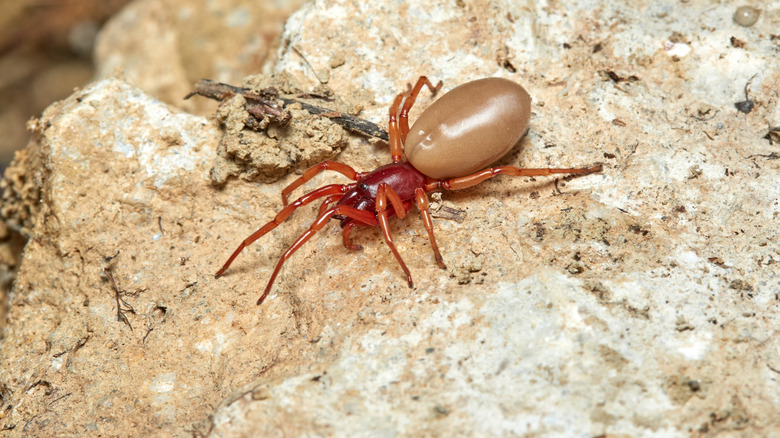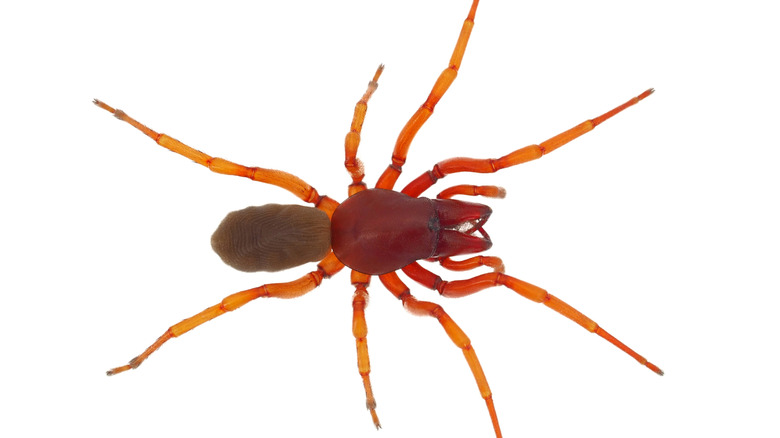Do You Need To Worry About This Brown Recluse Lookalike In Your Garden?
Seeing a spider in your home is never pleasant, but you shouldn't assume that these arachnids are always going to be dangerous or harmful. The woodlouse spider, Dysdera crocata, is a prime example. This spider certainly looks threatening. Their long fangs and eight long legs are an intimidating sight. In reality, though, they are not considered very aggressive creatures. That said, out in the garden, woodlouse spiders are skilled predators that live to capture and consume their archenemies — the equally harmless woodlouse, also known as a pill bug or roly poly.
The biggest reason people get creeped out by woodlouse spiders, admittedly, is because they have a striking resemblance to a spider you do need to worry about. And while woodlouse spiders are one of the more common spiders in your house that may be mistaken for the big bad brown recluse, there are noticeable features that set these two species apart. Most prominently, brown recluse spiders have a unique mark shaped like a violin on their backs, and woodlouse spiders are solid colored with larger fangs.
Sure, such a fearsome-looking arachnid is still the kind of bug you don't want living in your home, because it does occasionally bite people — and though the effects are harmless, they are mildly unpleasant — but it's nothing to fear. That said, there are a few other things to look for when you're making sure that the spider on your hands is not a brown recluse.
The habits of a brown recluse spider are very different from the woodlouse spider
Physical markings aside, there are other factors to look for when identifying a brown spider in your home or garden. Season, geography, and lifestyle are some major ones. A woodlouse spider's one goal in life is to head to territories occupied by woodlice, which are typically damp areas with mulch, decomposing wood, piles of wood, and bark. If a woodlouse spider makes its way into your home, chances are it will be in the wintertime, as these insects seek shelter during the colder months. Although they live across North America, they are more commonly found indoors in areas with colder winter climates, such as the northeastern and midwestern United States, between the months of October and April. Residents of the Pacific Northwest are less likely to see them inside their homes, as they can spend much of the winter outside. If they get in, woodlouse spiders prefer to hide out in humid and dark environments, such as underneath floorboards.
That's a far cry from the dry temperatures beloved by the brown recluse, which just wants a very not-humid, dark place to make its home (they are named "recluses" for a reason). It's also worth noting that brown recluses are generally only found in 16 states, none of which are particularly far west.
In the end, just remember that woodlouse spiders are harmless, so don't get scared if you see one in your home — just look carefully and make sure you're not dealing with a deadly brown recluse.

